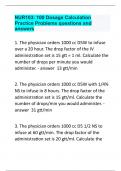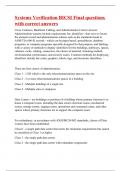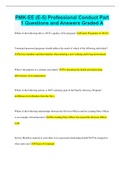Exam (elaborations)
Wall Street Oasis Exam with Complete Answers Graded A+ 2024 New Update
- Course
- Institution
Wall Street Oasis Exam with Complete Answers Graded A+ 2024 New Update How do you become an equity holder? - Answer-- Provide bootstrap / angel / VC funding - Buy shares during an IPO or on the open market once the company is trading publicly - Buy options, warrants or other equity-granting i...
[Show more]












